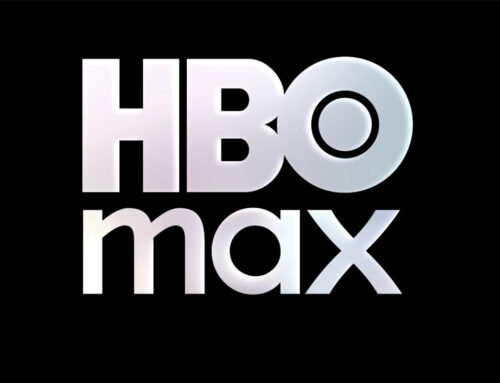The Shift Towards Streamlining: Understanding Why Streaming Platforms Are Reducing Their Content Offerings
The landscape of streaming platforms is undergoing constant transformation, increasingly resembling the traditional cable model it once sought to supplant.
Discussions loom about the possibility of platform bundles, coinciding with significant changes among major streamers. These include the introduction of ad-supported plans, restrictions on password sharing, and a renewed emphasis on live sports coverage. The initial pursuit of rapid subscriber growth, fueled by lockdowns during the pandemic, has now given way to a focus on profitability, a demand echoed by investors on Wall Street.
In this quest for profitability, a new strategy is emerging: prioritizing depth over breadth.
Last year saw many streaming services scaling back their once-expansive content libraries to mitigate the burden of steep licensing fees. Even content creators themselves are not exempt, as evidenced by NBC’s hefty $500 million expenditure to reclaim the rights to “The Office” in 2019.
Under increasing pressure to turn profits and faced with heightened competition for viewers, streaming platforms are opting to streamline their content offerings to avoid ongoing payments and licensing costs. This dichotomy has effectively divided major streaming companies into two camps: those who acquire content and those who sell it.
On one side stand Netflix, Amazon, and Apple — companies that procure content from various studios to enrich their streaming collections. On the other side are Disney, Universal, Warner Bros. Discovery, and Paramount, leveraging their vast content archives to bolster their platforms while lucratively auctioning off surplus content.
Stephanie Fried, Chief Marketing Officer at Fandom, underscores this shift: “The brands acquiring these titles are strategizing on operational efficiency, opting not to create content but to acquire licenses.”
The sellers receive cash, while the buyers gain access to content with a proven track record of reliability and consumer appeal. This is particularly crucial for Netflix, a relative newcomer to the Hollywood scene with fewer long-running, binge-worthy series in its arsenal. The success of NBC’s “Suits” on the platform last year exemplifies this trend. Notably, Netflix is already profitable, while Amazon and Apple view streaming as a supplementary aspect of their broader business models rather than a core focus. Meanwhile, other major players in the streaming industry are still striving to achieve profitability.
The reduction of content libraries naturally necessitates a focus on differentiation.
During the initial proliferation of streaming platforms over the past 15 years, many sought to cater to a broad audience with an “everything for everyone” approach. However, this homogeneity could prove detrimental as the landscape becomes increasingly saturated. Fried suggests that streamers should analyze their subscribers’ viewing habits and acquire complementary content that has not yet been licensed.
This approach has proven successful for smaller streaming services like BritBox and Shudder, which focus on specific genres such as British dramas and horror, respectively.
In conclusion, understanding viewer preferences and investing in content that resonates with specific audience segments can be key to success in the increasingly competitive streaming landscape.
SOURCE: CNBC
Share:
The landscape of streaming platforms is undergoing constant transformation, increasingly resembling the traditional cable model it once sought to supplant.
Discussions loom about the possibility of platform bundles, coinciding with significant changes among major streamers. These include the introduction of ad-supported plans, restrictions on password sharing, and a renewed emphasis on live sports coverage. The initial pursuit of rapid subscriber growth, fueled by lockdowns during the pandemic, has now given way to a focus on profitability, a demand echoed by investors on Wall Street.
In this quest for profitability, a new strategy is emerging: prioritizing depth over breadth.
Last year saw many streaming services scaling back their once-expansive content libraries to mitigate the burden of steep licensing fees. Even content creators themselves are not exempt, as evidenced by NBC’s hefty $500 million expenditure to reclaim the rights to “The Office” in 2019.
Under increasing pressure to turn profits and faced with heightened competition for viewers, streaming platforms are opting to streamline their content offerings to avoid ongoing payments and licensing costs. This dichotomy has effectively divided major streaming companies into two camps: those who acquire content and those who sell it.
On one side stand Netflix, Amazon, and Apple — companies that procure content from various studios to enrich their streaming collections. On the other side are Disney, Universal, Warner Bros. Discovery, and Paramount, leveraging their vast content archives to bolster their platforms while lucratively auctioning off surplus content.
Stephanie Fried, Chief Marketing Officer at Fandom, underscores this shift: “The brands acquiring these titles are strategizing on operational efficiency, opting not to create content but to acquire licenses.”
The sellers receive cash, while the buyers gain access to content with a proven track record of reliability and consumer appeal. This is particularly crucial for Netflix, a relative newcomer to the Hollywood scene with fewer long-running, binge-worthy series in its arsenal. The success of NBC’s “Suits” on the platform last year exemplifies this trend. Notably, Netflix is already profitable, while Amazon and Apple view streaming as a supplementary aspect of their broader business models rather than a core focus. Meanwhile, other major players in the streaming industry are still striving to achieve profitability.
The reduction of content libraries naturally necessitates a focus on differentiation.
During the initial proliferation of streaming platforms over the past 15 years, many sought to cater to a broad audience with an “everything for everyone” approach. However, this homogeneity could prove detrimental as the landscape becomes increasingly saturated. Fried suggests that streamers should analyze their subscribers’ viewing habits and acquire complementary content that has not yet been licensed.
This approach has proven successful for smaller streaming services like BritBox and Shudder, which focus on specific genres such as British dramas and horror, respectively.
In conclusion, understanding viewer preferences and investing in content that resonates with specific audience segments can be key to success in the increasingly competitive streaming landscape.
SOURCE: CNBC










